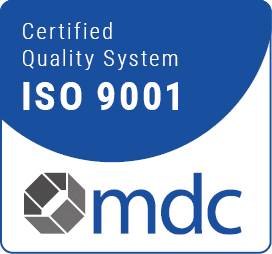Household cleaners are unsuitable for ultrasonic cleaning! #
Ultrasonic cleaning is carried out in stainless steel oscillating tanks with aqueous cleaning liquids. The optimum effect of the ultrasound requires the use of suitable cleaning preparations ⇒ STAMMOPUR or TICKOPUR preparations.
Some household cleaners, e.g. commercially available dishwashing detergents, are not suitable for ultrasonic cleaning because they may contain chloride ions. Chloride ions destroy the passive protective layer of the stainless steel surfaces in the oscillating tank and are thus the cause of corrosion. Dark holes the size of a pinprick develop, so-called pitting /1, 2/.
In addition to cleaners containing chloride ions, rust deposits, so-called extraneous rust, salty water, acidic dirt and acids on the stainless steel surfaces can also be the cause of pitting corrosion. Extraneous rust is caused by external disturbing factors, such as
- Rust particles from the water pipe system or from rusty cleaning material,
- Metal parts remaining on the stainless steel surface, such as screws, metal chips, metal dust, etc.
How to avoid pitting corrosion?
- Do not fill the stainless steel oscillating tank with cleaning agents containing chloride ions.
The cleaning preparations STAMMOPUR and TICKOPUR from DR. H. STAMM GmbH Berlin are free of chloride ions and have been specially developed for ultrasonic cleaning.
They guarantee thorough, fast and gentle cleaning with ultrasound if the respective dosing and application instructions are observed.
- Only use water with at least drinking water quality for the preparation of cleaning liquid. Use water with salt content only in insert vessels.
- Only clean items with acidic soiling in insert containers.
- Do not use acids or acidic cleaning agents that are not approved for the ultrasonic bath.
- Remove metal parts, chips, etc. that have been left in the oscillating tank.
Remove small rust stains immediately with a soft cloth and commercially available stainless steel care product without abrasive additives. Do not use steel wool, scrapers or scraper for this purpose.
Literature
/1/ Stainless steel - Properties, use. Edition 1989.
Publisher: Informationsstelle Edelstahl Rostfrei, Düsseldorf.
/2/ Edelstahl-Vereinigung e. V., Verein Deutscher Eisenhüttenleute: "Nichtrostende Stähle". Verlag Stahleisen mbH, Düsseldorf 1977.






